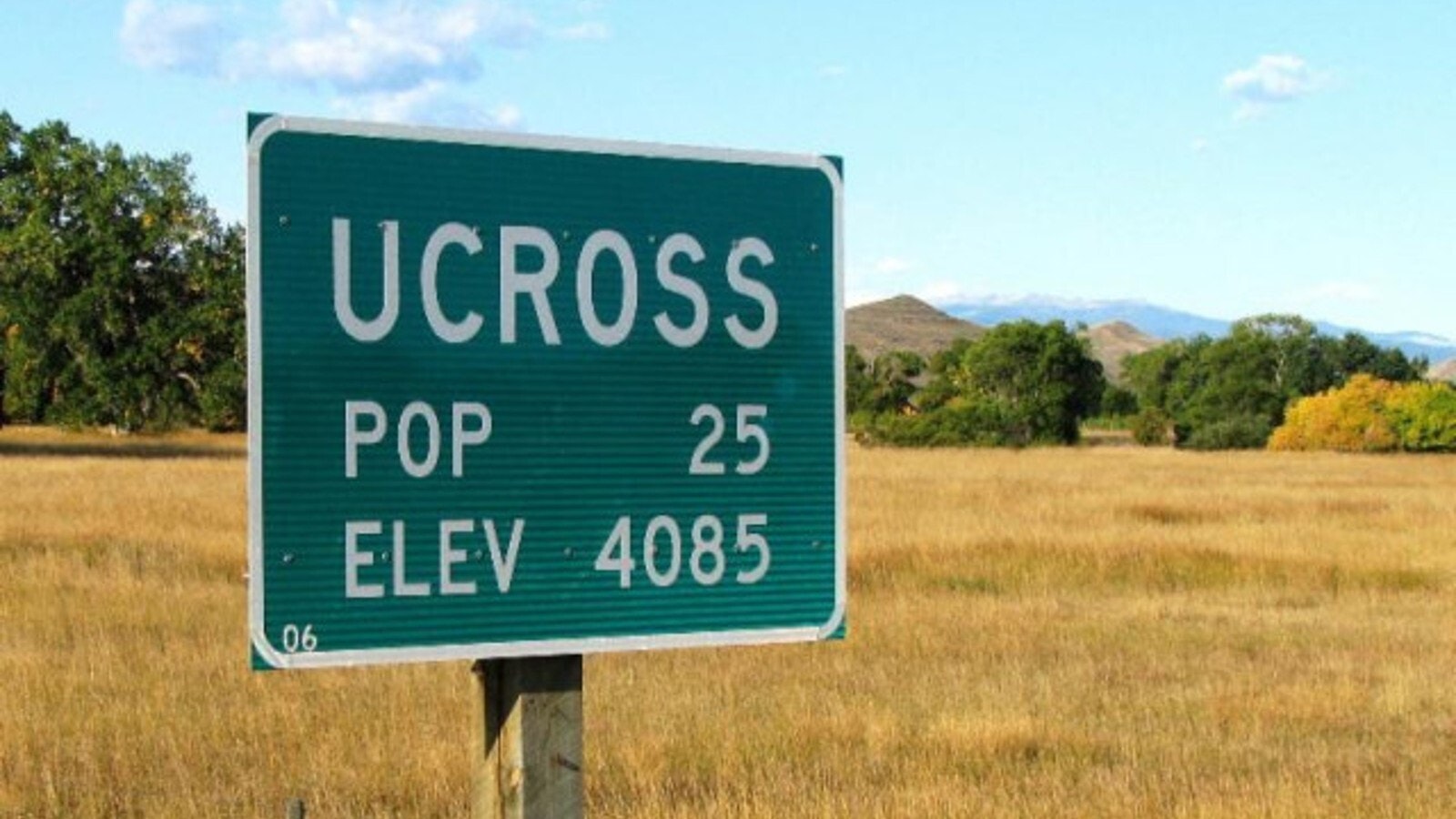Chances are that if you live in Wyoming there’s a rich history under the ground where you’re standing at any given moment. And for certain if you travel just a few miles there’s a high likelihood you will see something that’s cool, interesting or even downright odd. It’s fun to notice things that others may miss, and it’s also nice to keep a notepad in the vehicle to scrawl a cryptic note for things to look up later online. Of course you can always ask Siri to do that for you so you aren’t ‘driving distracted’ while trying to make a note.
While we have all heard the horror stories of the extreme loyalty to following advice of GPS navigation, especially in less-than-ideal travel conditions, one of the greatest adventures anyone, local or visitor, can embark upon in Wyoming is to get off the beaten path and explore the backroads from time to time. A trip from one side of the state to the other affords opportunities to see things that make you wonder why you’ve never heard about it before.
The beautiful landscape along historic Highway 14 provides what many in The Cowboy State may not have experienced yet. After all, the GPS is likely promoting a different route, with fewer bends and curves in the road. All things being equal, with no looming concerns for weather conditions or road closures, choose the scenic route.
Buffalo is located in Johnson County, where northbound you will find Interstate 25 ends and I-90 begins. If you continue north of Buffalo on I-90, towards Sheridan, you will see Lake DeSmet just off the Interstate to the east. The lake is purported to be an eerie place, especially after dark, as legends of tragedy run deep. The lake is described in a travel guide as being in the wilderness in the northern part of Wyoming. Wilderness? Not exactly. Wholly visible from I-90 doesn’t really qualify as wilderness.
But if you exit the Interstate at Buffalo and travel east on US 16 for about 16 miles, you will find the route merging with US 14 just inside Sheridan County at Ucross. US 14 in Wyoming runs east to west across the northern part of the state, connecting South Dakota on the east with Yellowstone National Park on the west. US 14 is mostly a two lane road except for several sections that it shares with Interstate 90. From Ucross to Spotted Horse, the beautiful loop has become a road less traveled that remains memorable. Ucross is the first town in what’s described as UCLA – encompassing the Wyoming areas of Ucross, Clearmont, Leiter and Arvada.
Traveling from Sheridan, US 14 moves eastward, joining with US 16 at Ucross. The road continues to Gillette where it joins again with Interstate 90. In 1981, the Ucross Foundation opened. A 20,000-acre artists retreat, the Foundation with a residency program that has hosted more than 1,300 artists, writers, and musicians. If Ucross sounds familiar but you can’t actually place it, well that makes sense if you’re a fan of the television series “Longmire.” Ucross is an unincorporated community along Piney Creek where author Craig Johnson has a log cabin.
Ucross received its name from the Pratt and Ferris Cattle Company, whose logo had a U with a cross beneath it. The Pratt and Ferris Cattle Company was formed in 1879 by partners James Hervey Pratt, Marshall Field, Levi Leiter, Robert M. Fair, and Cornelius Ferris, with Pratt as the general manager of ranching operations.
James Hervey Pratt was described as a frontier entrepreneur, rancher, farmer, land speculator, and freighter. Born in Plainfield, Massachusetts, in 1825, he participated in the Civil War as a quartermaster officer and returned to Hillsdale, Michigan in 1866, where he had resided before the war, and operated a flour mill.
In 1870 Pratt secured an appointment as post trader at Fort Randall, Dakota Territory. This appointment drew him into the Great Plains just when it was attracting many different kinds of businesses. During the Fort Randall years, Pratt became associated with Cornelius Ferris, the husband of Ermina (Pratt) Ferris, in the Pratt and Ferris Cattle Company to furnish beef to both the fort and the Red Cloud and Spotted Tail Indian agencies.
When the Sioux agencies were relocated to northwestern Nebraska, Pratt and Ferris sought a convenient location for moving their supplies to the agencies. They decided to form a freighting company and in 1875 located their headquarters at Sidney, Nebraska. Goods could be shipped to Sidney by Union Pacific, unloaded, and carried north to the agencies.
Pratt and Ferris, believed to have freighted the largest share of Indian annuity goods to the agencies in northwest Nebraska, had become the biggest outfit in Sidney’s Black Hills trade. In 1876 they shipped 9,230,560 pounds of freight and had 70 wagons with 550 animals. In 1877, in association with George H. Jewett, they organized the Sidney and Black Hills Transportation Company and entered the merchant and outfitting trade for miners and ranchers.
As the freighting boom was declining, Pratt and Ferris moved beyond freighting to a new opportunity: raising cattle. They brought Marshall Field and Levy Leitner, two of Chicago’s most prominent merchants and financiers, into their business and acquired vast land holdings in Nebraska, Wyoming, and Texas. This proved lucrative until the winter of 1886-87 brought savage blizzards, which bankrupted many cattle raisers on the northern Plains.
Pratt and Ferris stayed in business. Pratt bought and sold tracts of land in scattered locations. Pratt and Ferris operated the Ucross Ranch on Clear Creek in Johnson County, along with the P.F. Ranch in Goshen County. Pratt’s grandsons Jerome Pratt Magee and Wayland W. Magee were involved in operations of the P.F. property.
In 1890, the year Wyoming attained statehood, the Pratt & Ferris Cattle Company controlled the valley where the town of Clearmont is located. Before Clearmont became a town in 1892, there was the town of Huson, complete with a cemetery, post office and local press. Huson ceased to exist in November 1892, just six months after its post office was established because the owners of the Burlington and Missouri Railroad Co. didn’t like a bend in the track, and chose instead Clearmont as the location for its new station. Clearmont was platted in 1892 and is said to have derived its name from the Clear Creek that flows nearby and the view of the Bighorn Mountains in the distance.
Clearmont is just nine miles from Ucross and in the 2020 Census the population was reported to be 159. In fictional works, Clearmont is the location of the lead character’s ranch in the Colonial Radio Theatre old west drama series Powder River. The community is also featured in the book, “Spirit of the Owl” by Cynthia Vannoy and in her non-fiction book, “Seasons on a Ranch.”
In the early 1900s, Clearmont was a major shipping point for cattle and became a terminal point in 1914. Farming and agriculture have been important to the region since its inception through the present day. In the 1920s, a fire destroyed a row of buildings that included the Rock Hotel and Saloon, a meat market, and a popular confectionary store.
The Clearmont Town Jail, built in 1922, is listed on the National Registry of Historic Places. In 1919 developers asked Clearmont’s Town Council to authorize construction of a jail. Town officials had become concerned by the growing transient and migrant farm worker populations and the need for law and order. The Town Council funded the construction of the jail in 1922. The Clearmont Jail is a solid steel and concrete structure with walls that are five-and-one-half inches thick. The jail was used frequently through the 1950s. It was thought that the jail was an effective deterrent to crime because it did not have any modern facilities. Prisoners were taken to a cafe to eat, and back at the jail they were given a can to serve as a toilet. It was used for the last time in 1961.
Today, the tiny, historic jail stands amidst the usual modern playground equipment in Clearmont’s municipal park, next to a swing set and beneath the town water tower. While a perfect place to stop the car and have a picnic there’s always the possibility that playground misbehavior could land offenders in the hoosegow!
Levi Zeigler (L.Z.) Leiter was the co-founder of the Field and Leiter dry goods business, which later became Marshall Field & Company. Leiter also made a fortune in Chicago real estate, becoming one of the single largest landowners in the city during its period of phenomenal growth in the late 19th century.
From 1892 to 1898, L.Z.’s son Joseph was his agent. Joseph attempted to corner the wheat market from 1897 to 1898, and was briefly the largest individual holder of wheat in the history of the grain trade. His ‘corner’ was broken when competitors banded together in retaliation. L.Z. paid millions of dollars to settle son Joseph’s debts after the market crashed in 1898, with losses reputed to run to $10 million. Joseph later became president of the Zeigler Coal Company, Chicago, and of the Chicago, Zeigler and Gulf Railway Company; and a director of the American Security and Trust Company.
With the Clear Creek Valley an ideal place to raise wheat and other grains, storage became necessary, so three distinctive concrete ‘towers’ were erected of concrete to store harvested grain. You can still spot the towers today, standing tall and lonely along the highway. These concrete grain elevators were built by the LZ (Levi Ziegler) Leiter company, which owned many acres of prime farmland and down Clear Creek. The small town of Leiter bears his name, and there is a café, bar, and several motel cabins still in operation. The elevators are identical in size and structure. There is one between Leiter and Clearmont, at the extinct town of Big Corrals. Each tower is reported to hold some 29,000 bushels of grain.
The hulking towers were built between 1917 and 1920, as a task of monumental proportions. To build the grain elevators, forms were placed on the bottom, then jacked up, and cement was poured in to form the walls. You can still see lines in the concrete sides where the joints formed. The gravel for the concrete was hauled by wagon from Clear Creek, about a half a mile away. New Year’s Day, 1920 was a day for celebration as workers, who had to keep a coal stove at the bottom of the silo going full blast just to dry the concrete, put in the final layer.
Clearmont Area ranchers planted and harvested winter wheat, and sold it to Sheridan Flouring Mills and later Best Out West Flours.
When L.Z. Leiter died of heart disease at the Vanderbilt family cottage in Bar Harbor, Maine on June 9, 1904, his estate became the subject of eight years of litigation. After his death, his Washington, D.C. home, an elaborate mansion built adjacent to Dupont Circle in Washington, D.C., was used for parties hosted by his widow. During WWII, the mansion was leased to the U.S. Government for office space. The property was sold and the structure demolished in 1947. The site is now the location of the Dupont Hotel.
In 1927, Sheridan Flour Mills, Inc., purchased the elevators from the L.Z. Leiter estate. Later branded, Best Out West Flour and Tomahawk Feeds, it was well known throughout the United States during its heyday in 1934.
In 1974, due to the changes in freight rates for grain and flour, the mill in Sheridan couldn’t remain competitive in the changing marketplace so the operations were closed and the buildings and land were sold. Many ranchers responded by switching their operations strictly to livestock and re-seeding the wheat fields with a dry-land wheat grass optimized for grazing.
The historic 1920 Sheridan Mill still stands, but is now The Mill Inn Motel and is listed on the National Register of Historic Places. The other three concrete towers still stand along Highway 14-16, a mute reminder of Sheridan’ County’s diverse past.
Although the community of Leiter is unincorporated, it has a post office, with the ZIP code of 82837. Outlying ranching communities also had their own dancehalls, sometimes attached to bars and post offices, sometimes in separate buildings known as community halls. There were country dances in many communities, including Spotted Horse, Leiter and Arvada. Arvada was known for its Christmas dance, occurring on the night of December 25 when all ages gathered to participate. It was an opportunity to see and visit neighbors, engage in square dances, and the location provided a perfect setting for celebrations, ranging from wedding receptions to social events.
Arvada is located on the west bank of the Powder River, roughly fifty miles northwest of Gillette. Between 1888 and 1891 there was a stage line that ran from Sundance to Buffalo, crossing the Powder River on a ferry boat at the future site of Arvada. The town of Suggs, Wyoming, was established on the east bank of the river in 1891, and a post office opened September 14, 1891. Suggs was named for a local rancher.
Although the railroad had only reached Gillette at that point in time, railroad crews working on the Burlington and Missouri River Railroad, built a bridge across the Powder River at Suggs during the summer of 1892. This resulted in Suggs quickly becoming known as an “end of tracks town” with bars, brothels, and gambling establishments.
During the Johnson County War of 1892, a group of Buffalo Soldiers from Fort Robinson rode the train to Gillette and then marched to Suggs. It was three that black soldiers built “Camp Bettens” in spite of a hostile and racist local population. One black soldier was killed and two wounded in gun battles with locals in a fight known as the “Battle of Suggs.” Camp Bettens was built in mid-June 1892, but was abandoned by mid-November.
When the railroad reached Suggs in 1892, railroad officials planned the new town of Arvada on the west bank of the Powder River, and Suggs was abandoned. The post office was moved from Suggs to Arvada on July 20, 1893.
With the area boasting deposits of coal at a shallow depth, local wells since the early days were known to produce natural gas in solution in the drinking water. The drinking water would catch on fire, and could be lit on fire.
In the first decade of the 21st century, Arvada was included by the United States Census Bureau in a census designated place which was then named for the town. In 2011, the US Postal Service proposed closing the Arvada post office along with 42 other Wyoming post offices.
While Arvada wraps up the ‘A’ in the UCLA tour in Sheridan County, it just wouldn’t be right not to mention Spotted Horse, located in Campbell County about 38 miles from Gillette. The unincorporated community of Spotted Horse reportedly has a population of two and it’s widely reported that Peter Fonda once broke down here on his motorcycle.
“Old Spot,” a stuffed horse with a real hide, looks like a weather vane that’s been up-ended and strikes a pose next to a vintage Standard Oil sign, both located at the Spotted Horse Bar. Old Spot was originally frozen in a bucking position, mounted on a swivel so tourists could hop on for a picture that was sure to fool their friends at home.
Spotted Horse is on U.S. routes 14/16, at the head of Spotted Horse Creek, a tributary of the Powder River. The undeveloped Spotted Horse coalfield is situated to the north of town. The name is derived from a Native American.
In 1811 the Astorian Expedition camped near the future Spotted Horse townsite in 1811. Pacific Fur Company base operations had been established at the mouth of the Columbia River in 1811, at Fort Astoria, present-day Astoria, Oregon. A party of Astorians returning overland to St. Louis in 1813 made the important discovery of the South Pass in Fremont County. This geographic feature would later be used by hundreds of thousands of settlers traveling over the Oregon, California, and Mormon routes, collectively called the Westward Expansion Trails.
As for Spotted Horse, a small community lived at the site in the 19th century. Back around 1900, Solon and George Walker established a general store and post office. A.L. Pringle established the present bar as a store and gas station in the early 1920s.
A school was also established in the 1920s.
The dance hall was destroyed in a 1944 tornado and the school is now closed. Back in 1947 you could get 11 gallons of gasoline for $2.84 and in 1952 it was the perfect place for an inexpensive date, where a hamburger lunch for two was $2.50. Today, ranchers still come in for a bite and a drink, and tourists find Spotted Horse a charming place to take a break and snap photos to upload on social media.
Meanwhile, a short 12 minute drive by car from Spotted Horse you’ll find Recluse, so named for its isolated location. Recluse is a small, unincorporated community in Campbell County with a post office that has been in operation at Recluse since 1924.
The absence of light pollution makes stargazing one of the best things to do in tiny Recluse.
People who are known in the spotlight also seek refuge in Recluse. 38-year-old Samuel Robert Shaw is an American professional wrestler who lists his current residence as Recluse, Wyoming. He is currently signed to WWE, where he performs on the NXT brand under the ring name Dexter Lumis. He is a former member of The Way.
Shaw is also known for his work in Total Nonstop Action Wrestling under his real name, where he is a former TNA Gut Check winner. In addition, he competed in TNA’s then-developmental territory, Ohio Valley Wrestling, where he was a two time Southern Tag Team Champion.
Samantha De Martin, is an Australian professional wrestler, best known by the ring name Indi Hartwell. On August 17, 2021, Hartwell proposed to Lumis after the pair won a match on NXT, and Lumis accepted. The pair exchanged vows during one of the most unique weddings in WWE history on the September 14 edition of NXT.
Hartwell is currently signed to WWE, performing on the NXT brand, and was a member of The Way. She is a former NXT Women’s Tag Team Champion, as well as a former WSW Women’s Champion and RCW Women’s Champion. After meteoric rises everywhere she’s been, it may only be a matter of time until Hartwell climbs to the top of WWE.
This page from Wyoming’s rich history has been presented by Mick Pryor, Edward Jones Financial Advisor. While we can’t change the past, a financial strategy for the future can be planned. If you have questions, concerns or are simply looking for a friendly advisor to discover your goals, discuss strategy and look to your financial future, contact Mick Pryor today.





